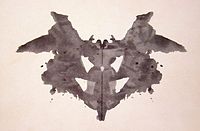
Photo from wikipedia
Introduction This study aims to develop and validate an integrative intrinsic capacity (IC) scoring system, to investigate its associations with a wide spectrum of biomarkers and to explore the predictive… Click to show full abstract
Introduction This study aims to develop and validate an integrative intrinsic capacity (IC) scoring system, to investigate its associations with a wide spectrum of biomarkers and to explore the predictive value of the integrative IC score on 4-year mortality among community dwelling people aged 50 years and older. Methods We included 839 adults aged ≥50 years from the Social Environment and Biomarkers of Aging Study (SEBAS) and randomly divided them into derivation and validation cohorts to develop the IC scoring system. The multivariate logistic regression model was used to weight each subdomain (locomotion, sensory, vitality, psychological, and cognition) of IC according to its association with impairments in instrumental activities of daily living (IADL) and to construct the integrative IC score. Age-related biomarkers and genetic markers were compared between IC groups by ordinal logistic regression. A Cox proportional hazard model was used to examine the association between IC and mortality, and subgroup analysis was used to assess the robustness of the results among participants aged 60 years and older. Results A 12-score IC scoring system (AUROC = 0.83; Hosmer–Lemeshow goodness-of-fit test p = 0.17) was developed, and higher scores indicated better intrinsic capacity. High interleukin (IL)-6, high E-selectin, low serum albumin and low folate were significantly associated with low IC in the whole sample. However, high IL-6, low serum albumin, low folate, high allostatic load, and APOE ε4 genotype were significantly associated with low IC in those aged 60 years old and older. Compared to the high IC group, the low IC group was significantly associated with all-cause mortality (HR: 2.50, 95% CI: 1.22–5.11, p = 0.01 for all participants; HR 2.19, 95% CI 1.03–4.64, p = 0.04 for participants aged 60 years and older). Conclusions The conceptually proposed IC can be easily transformed into a scoring system considering different weights of individual subdomains, which not only predicts mortality but also suggests different pathophysiologies across the life course of aging (inflammation, nutrition, stress, and ApoE4 genotype). An intervention study is needed using the composite IC score to promote healthy aging and determine the underlying pathophysiology.
Journal Title: Frontiers in Medicine
Year Published: 2022
Link to full text (if available)
Share on Social Media: Sign Up to like & get
recommendations!